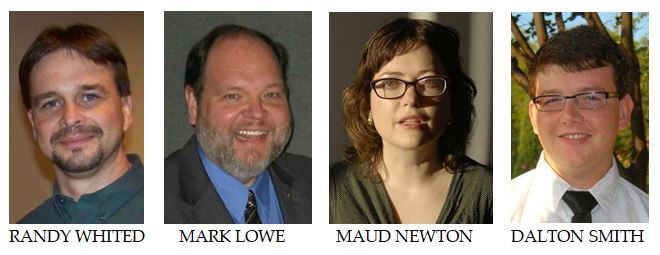
By JAMES PYLANT
Copyright © 2015, 2017
Return to Features
There’s a new term we’re hearing often: DNA cousins. They’re the relatives whose profiles (and sometimes pictures) pop up on our lists of genetic matches on FamilyTreeDNA, 23andMe, AncestryDNA, and MyHeritage. Meeting them in person can be a bonding experience; science proves we’re related.
My list of DNA relatives on ancestry.com numbers 7,250 ranging from second cousins to those estimated somewhere between fifth to eighth cousins. Of that number, I can only pinpoint the exact kinships to 80. Yet, my father’s 1,426 FamilyFinder matches at FamilyTreeDNA and my mother’s 933 DNA relatives at 23andMe reveal not more than a dozen identifiable relationships each. This is due to the lack of uploaded pedigrees on the last two last-named sites.
Genetic genealogy is booming. Bennett Greenspan, president of FamilyTreeDNA, had a steady stream of visitors wanting to visit with him at his company’s booth at the 2015 RootsTech/Federation of Genealogical Societies Conference in Salt Lake City. At that same conference, I ran into Texas-based professional genealogist Randy Whited. “You’re on my list of DNA cousins,” I informed him. That sparked a conversation about how we’re related. So far we’ve determined that his maternal grandfather is related to my father. Both have roots in Pope County, Arkansas, but beyond that, we don’t have a clue about the exact kinship. I mentioned that I was hoping to run into another one of my DNA matches at the conference, J. Mark Lowe, a Certified Genealogist and author.
Lowe and Behold, there’s Mark. At a nearby restaurant that same day, I spotted Mark Lowe and approached him. “We’re DNA cousins,” I announced. Like Randy, Mark is related to my father though Mark and Randy do not appear to match each other.
Meanwhile, at a table next to us, a woman introduced people in her party as her “DNA cousins.” The term is catching.
And then there’s Maud. One of the conference sessions I attended was CeCe Moore’s presentation, “Genetic Genealogy Standards.” A couple of times CeCe mentioned a woman in the audience name Maud. Then she added something that sounded familiar: Maud is a journalist, and she’s writing a book about DNA. When the session ended, I approached the woman CeCe had introduced.
“Are you Maud Newton?” I asked.
“Yes,” she answered.
I introduced myself, handed her my business card, and for the third time that day I said, “You’re on my list of DNA matches.”
Maud is writing a book about the science and superstition of ancestry for Random House. There seems to be a pattern here—my three DNA matches have a professional involvement in genealogy. Maud and Randy were both presenters at the Global Family Reunion in New York last month.
Since our meeting, Maud and I’ve exchanged a flurry of e-mail messages, offering guesses about our kinship. This time Maud turns out to be a maternal cousin. That’s not what Maud would have guessed based on appearance. “You look more like my dad’s side,” she explains. Like me, she has Arkansas and Texas roots, but we’re family tree stumped about how we’re related.
And one more… There’s fourth DNA cousin I met in person at Salt Lake City conference: Dalton Smith, a college student. He’s giving thought to someday becoming a board-certified genealogist. At the conference, Cousin Dalton was interviewed for the FamilySearch blog.
While Randy, Mark, and Maud tested with FamilyTreeDNA, Dalton’s name popped up on my chromosome browser-challenged AncestryDNA list. That means we had to use another source—gedmatch.com—to learn about our kinship.
“Both of my parents are registered with Gedmatch,” I told him. “So, at least I’ll know which of my parents you’re matching.” But instead of the comparison pointing us in the right direction, it’ double-arrowed. Estimates show Dalton and my father’s most common recent ancestor was five generations ago, while Dalton and my mother’s kinship may be a generation closer.
When browsing lists of DNA cousins and studying the family trees attached to their profiles, even the most experienced genealogists often feel that their years of research have only scraped the surface.

